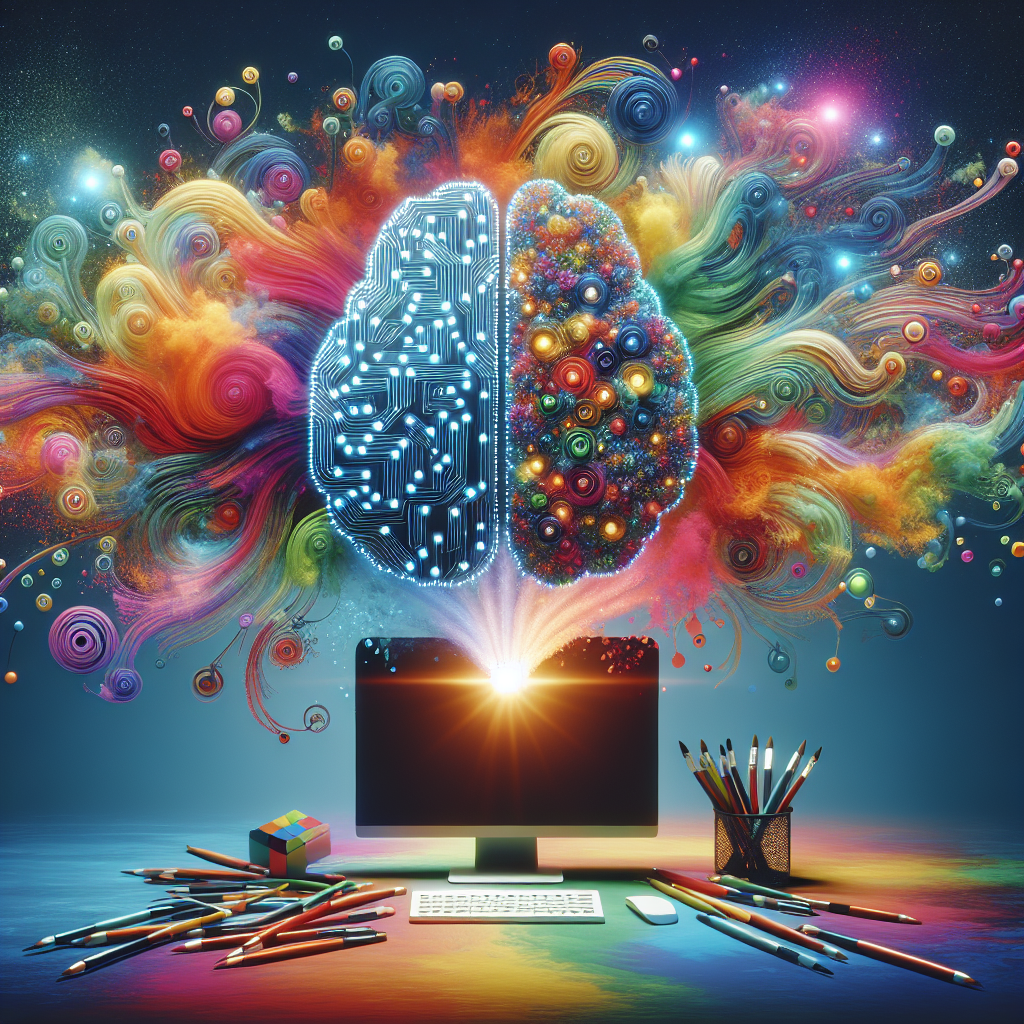Artificial Intelligence (AI) has revolutionized many industries, including healthcare, finance, and transportation. However, one area that has seen significant advancements is creativity. AI is now being used to enhance and even generate creative works, challenging traditional notions of the creative process.
The intersection of AI and creativity has sparked debates about the role of technology in artistic creation. Some argue that AI can never truly replicate the human experience and emotions that drive creativity. Others believe that AI can be a powerful tool for artists, helping them push the boundaries of what is possible.
Rethinking the Creative Process
AI has the ability to analyze vast amounts of data and generate insights that humans may not be able to see. This can be especially useful in creative fields where inspiration and innovation are key. For example, AI can analyze patterns in music, art, or literature to help artists create new works that are truly unique.
One of the most famous examples of AI in the creative process is Google’s DeepDream project. DeepDream uses a neural network to analyze and enhance images, creating surreal and psychedelic artworks. While the project was initially created as a way to understand how neural networks work, it has since been used by artists to create stunning visual art pieces.
Another example of AI in the creative process is the music composition software AIVA. AIVA uses deep learning algorithms to compose original music in various genres. While AIVA cannot replace the emotional depth of human composers, it can be a valuable tool for musicians looking for inspiration or help in the creative process.
AI can also be used to enhance the creative process by automating repetitive tasks, such as image editing or data analysis. This allows artists to focus on the more creative aspects of their work, rather than spending time on mundane tasks.
Critics of AI in the creative process argue that it can lead to a homogenization of art, as AI algorithms may favor popular trends or styles. They also worry that AI could replace human artists, leading to a loss of authenticity and emotional depth in creative works.
However, proponents of AI in creativity believe that it can open up new possibilities for artists and redefine what it means to be creative. By working alongside AI, artists can explore new techniques, styles, and ideas that they may not have considered on their own.
FAQs
Q: Can AI truly be creative?
A: While AI can generate creative works, it is important to remember that creativity is a complex and uniquely human trait. AI lacks the emotional depth and personal experiences that drive human creativity. Instead, AI can be a tool to enhance and inspire creativity in artists.
Q: Will AI replace human artists?
A: AI has the potential to automate certain tasks in the creative process, but it cannot replace the emotional depth and personal touch that human artists bring to their work. AI can be a valuable tool for artists, helping them explore new ideas and push the boundaries of what is possible.
Q: How can artists work with AI in the creative process?
A: Artists can work with AI in various ways, such as using AI to generate ideas, analyze data, or automate repetitive tasks. By incorporating AI into their creative process, artists can explore new techniques and styles that they may not have considered on their own.
Q: What are the ethical implications of AI in creativity?
A: There are ethical considerations to be made when using AI in creativity, such as ensuring that AI-generated works are credited appropriately and that artists retain control over their creative output. It is important to consider the implications of using AI in the creative process and to ensure that artists are not marginalized or replaced by technology.
In conclusion, AI has the potential to revolutionize the creative process, pushing artists to explore new techniques and ideas. While AI may never truly replicate the emotional depth and personal experiences that drive human creativity, it can be a valuable tool for artists looking to push the boundaries of what is possible. By working alongside AI, artists can redefine what it means to be creative and create truly unique and innovative works.

